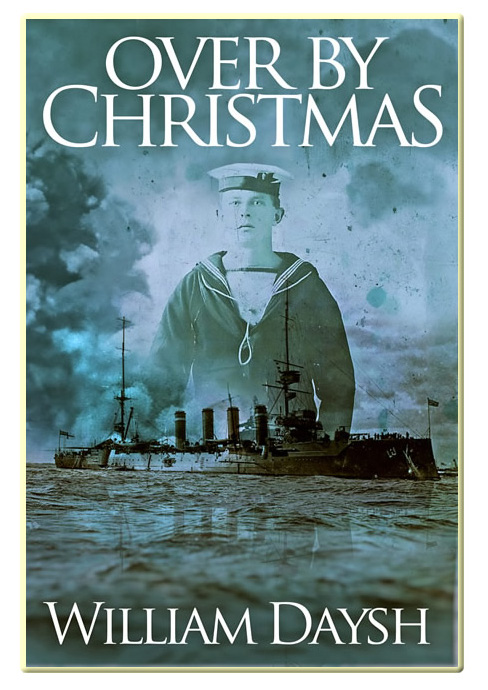
Review by Bob Jerrard of Royal Navy & Maritime Book Reviews
“This is a novel, however much of it is based on historical fact and as such it is a very absorbing read, which held my attention throughout. Since this review is for this website “Royal Navy and Maritime Book Reviews”, I hope I will be forgiven for not concentrating too much on the romantic and domestic aspect and the various love affairs. These concern HH Asquith, Venetia Stanley, George Royal (Royal Naval Gunner), Bill Guy and Carrie (Caroline Palmer), which may draw you away from great matters of state, as indeed it did to the Prime Minister when Britain was at war. The book takes us through the years from March 1914 to January 1916 and since much of it is centred around Portsmouth and Gosport where I resided until I was twenty-seven and my family had lived since 1866, I naturally took a keen interest with familiar streets and locations. I have lived and worked both sides of the water. Unlike Carrie I am still to be convinced that ‘the drab naval city that was Portsmouth was the most exciting place in England’ – however it holds many memories for me as I still call it my home town and I share with her the view from Portsdown Hill, ‘their view from the top of the hill took Carrie’s breath away – a birds-eye view of fifty miles of Hampshire, Sussex coastline at her feet, Portsmouth and the Solent, Chichester, Southampton and the Isle of Wight. I lived on Portsdown Hill and take that view with me always. This is the Naval History of those two tragic years for the Royal Navy and the story covers many losses and famous battles from the loss of HMS Amphion, an active class cruiser completed in 1912 and mined 4 August 1914. One of the crew of Amphion was in fact Edward SF Fegen later as Captain of HMS Jervis Bay in WWII he won the VC. See ‘If the Gods are Good, The Sacrifice of HMS Jervis Bay’, Gerald L Duskin & Ralph Segman, Crëcy Maritime, 2005. Our novel does not state that approximately 147 British and 24 German prisoners died when she sank. The book gives the impression that there was just 3. An error appears on Page 63 where it states that HM ship Hogue, Aboukir and Cressy were sunk by U-29. All my sources tell me that it was U-9, Captain Otto Weddingen who actually perished with another boat – U-29 later in the war. U-9 was the first U-Boat ever to reload her torpedoes whilst still submerged. We move through WWI and the story takes us through the battles of the Falklands and Coronel. Our hero George Royal spent a large part of his war in HMS Inflexible (an Invincible class battlecruiser) described in ‘The Fleet at War’, Hodder & Stoughton 1915 as ‘A Cruiser edition of the dreadnought’. A good photograph of HMS Indomitable, a sister ship, can be found in ‘The Royal Navy in Old Photographs’, JM Dent & Sons Limited 1975 and it is easy to see why George would have felt so proud. George’s father served in HMS Good Hope, which was incidentally the first RN ship to be painted all grey instead of black and yellow with a pink water line. The story follows his life until that ship was lost. As a story I really enjoyed the read. However certain other aspects need to be mentioned, such as why anybody would need fourteen attempts to get into a hammock. I slept in a hammock in my first two ships and I never knew any Boy Seaman take that long! Why Mrs J Royal received a Telegram (Page 123), which seems all jumbled up? How Gwen, when setting off for the nearest Naval Establishment in Gosport jumped ahead of her time and found HMS Vincent (HMS St Vincent) which in 1914 would still have been Forton Barracks home of the Royal Marine Light Infantry (Red Marines) who left Forton 5 September 1923 (Last man out takes the clock). The boys moved in as HMS St Vincent 17 May 1927. In 1914 HMS St Vincent was a dreadnought Battleship. The Royal Naval Barracks at Portsmouth opened 30th Sept 1903. There was an Establishment called ‘Haslar Gunboat Yard’ and I believe a coastal motorboat base was operational beside Haslar Bridge during WWI and in 1925 it became HMS Hornet. Haslar Bridge, we called it Windy Bridge, was once my shortcut home from HMS Dolphin when I lived in Henry Street. I must admire the spirit of Carrie and Bill who travelled from Gosport by Buggy to the top of Portsdown Hill – it must have been quite a return journey in those days. None of this should detract from the fact that this is a very good read, books are written for the general public and not Reviewers such as I. As well as enjoying the book I learnt a lot along the way and I look forward to the author’s next book because I understand he intends to continue the story with the minor players. Will George find happiness and will Carrie find whatever she is seeking?” Bob Jerrard, August 2008
